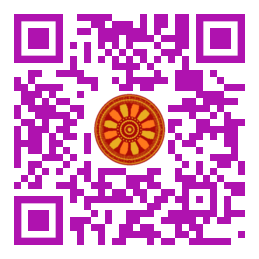
:: International Transaction Journal of Engineering, Management, & Applied Sciences & Technologies
http://TuEngr.com

ISSN 2228-9860
eISSN 1906-9642
CODEN: ITJEA8
FEATURE PEER-REVIEWED ARTICLE
Vol.12(3) (2021) |
Urban Design Elements with a Case Study at Bandar Sungai Petani of Kedah
 Aida Amalina Abd Rahim, Mohamad Azil Muzammil Baharudin, Yasser Arab, Ahmad Sanusi Hassan (School of Housing, Building & Planning, Universiti Sains Malaysia, MALAYSIA),
Aida Amalina Abd Rahim, Mohamad Azil Muzammil Baharudin, Yasser Arab, Ahmad Sanusi Hassan (School of Housing, Building & Planning, Universiti Sains Malaysia, MALAYSIA),
Khiensak Seangklieng, (Faculty of Architecture and Planning, Thammasat University, THAILAND),
Boonsap Witchayangkoon (Department of Civil Engineering, Thammasat School of Engineering, Thammasat University, THAILAND).
Disciplinary: Architecture and City Planning, History of Southeast Asia.
doi: 10.14456/ITJEMAST.2021.44
Keywords: Colonial architecture; City development; Mental mapping; Commercial area; Government office; Colonial urban element; Architecture identity.
AbstractThis study focuses on the early development of Bandar Sungai Petani during the early 1990s and the impact of the colonization, resulting in a variety of physical design and configuration that can encourage social fabrics and economy. This study's goal is to justify the identity, history of the early settlement of Bandar Sungai Petani during the early year and the progress of development of urban design influence of typography, lifestyle of the habitants, economic capacity that made the area one of the major towns in Peninsular Malaysia. Sungai Petani is known as an industrial town due to its economic activity. This research method involves observation and data collection.. The study finds that Bandar Sungai Petani has a masterplan with gridiron design, which is systematically arranged although irregularly. The gridiron concept forms primary road networks and linkages with vehicular paths, making the place well connected and having good circulation in the area. The study also shows that the urbanization of Bandar Sungai Petani has been impacted a lot by the trading activity from the early colonial era. Based on research, during the first years, Kuala Muda was once the administrative centre and later moved to Bandar Sungai Petani that was identified as a colonial trading area and has grown into governmental administrative and commercial sectors.Paper ID: 12A3B
Cite this article:
Rahim, A. A. A., Baharudin, M. A. M., Yasser Arab, Hassan, A. S., Seangklieng, K., Witchayangkoon, B. (2021). Urban Design Elements with a Case Study at Bandar Sungai Petani of Kedah. International Transaction Journal of Engineering, Management, & Applied Sciences & Technologies, 12(3), 12A3B, 1-13. http://doi.org/10.14456/ITJEMAST.2021.44
References
- Altman, I. 1975. The Environment and Social Behaviour: Privacy, Personal Space, Territoriality and Crowding. Monterey, CA: Brooks/Cole.
- Dempsey, N., Brown, C., Raman, S., Porta, S., Jenks, M., Jones, C., & Bramley, G. (2010). Elements of urban form. In Dimensions of the sustainable city. pp.21-51, Springer, Dordrecht.
- DSM. (2010). Population Distribution and Basic Demographic Characteristics. Department of Statistics, Malaysia.
- Hassan, A. S., & Abdul Nasir, M. H. (2018). Colonial city planning in Penang with a special reference to the government buildings. International Journal of Heritage Architecture, 2(1), 11-22.
- Hassan, A. S. (2009). The British Colonial' Divide and Rule' Concept in the Inner City of George Town. Penang: Its Influence to Irregular Layout of the Transport Access. International Journal of Transportation. 36(3), 309-324.
- Larice, M. & Macdonald, E. (2013). The Urban Design Reader. New York: Routledge.
- Lin, L. H., Nordin, J., Hassan, A. S., & Arab, Y. (2019). Elements of Paths, Edges, Nodes, Districts and landmarks in Fishing Village Waterfront, George Town, Penang. International Transaction Journal of Engineering, Management, & Applied Sciences & Technologies, 10(18), 10A18E: 1-14.
- Lynch, K. (1960). The Image of the City. Massachusetts: The MIT Press.
- Lynch, K. (1962). Site Planning. The University of California: The MIT Press.
- Meenar, M., Afzalan, N., and Hajrasouliha, A. (2019). Analyzing Lynch's City Imageability in the Digital Age. Journal of Planning Education & Research.
- Noresah, M. S., & Ruslan, R. (2009, July). Modelling urban spatial structure using Geographically Weighted Regression. In 18th World IMACS congress and MODSIM09 international congress on modelling and simulation, The Australian National University Canberra, ACT.
- Moughtin, C. (1999). Urban Design Methods and Techniques. Boston: Butterworth-Heinemann.
- Pauzi, M. H. M., Hassan, A. S., Arab, Y., & Samad, M. H. A. (2018). A study on Mental Mapping: Case of Government Buildings, George Town, Penang. International Transaction Journal of Engineering Management & Applied Sciences & Technologies, 9(3), 211-219.
- Shirvani, H. (1985). The Urban Design Process. New York: Van Nostrand Reinhold Company.
- Simpson, J., Freeth, M., Simpson, K. J., & Thwaites, K. (2019). Visual engagement with urban street edges: insights using mobile eye-tracking. Journal of Urbanism: International Research on Placemaking & Urban Sustainability, 12(3), 259-278.
- Zakaria, M.H., Ismail, M., Hassan, A.S. & Al-Ashwal, N.T. (2018). Urban Design Study on Kota Bharu City Centre, Kelantan, Malaysia. The Arab World Geographer, 21(3). 193-208.
Other issues:
Vol.12(2)(2021)
Vol.12(1)(2021)
Vol.11(16)(2020)
Vol.11(15)(2020)
Vol.11(14)(2020)
Archives
Call-for-Papers
Call-for-Scientific PapersCall-for-Research Papers: ITJEMAST invites you to submit high quality papers for full peer-review and possible publication in areas pertaining engineering, science, management and technology, especially interdisciplinary/cross-disciplinary/multidisciplinary subjects.
To publish your work in the next available issue, your manuscripts together with copyright transfer document signed by all authors can be submitted via email to Editor @ TuEngr.com (no space between). (please see all detail from Instructions for Authors)
Publication and peer-reviewed process:
After the peer-review process (4-10 weeks), articles will be on-line published in the available next issue. However, the International Transaction Journal of Engineering, Management, & Applied Sciences & Technologies cannot guarantee the exact publication time as the process may take longer time, subject to peer-review approval and adjustment of the submitted articles.